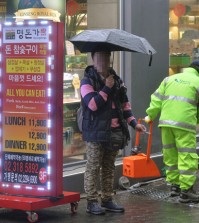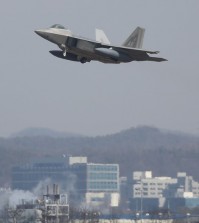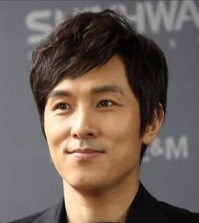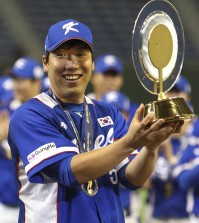- California Assembly OKs highest minimum wage in nation
- S. Korea unveils first graphic cigarette warnings
- US joins with South Korea, Japan in bid to deter North Korea
- LPGA golfer Chun In-gee finally back in action
- S. Korea won’t be top seed in final World Cup qualification round
- US men’s soccer misses 2nd straight Olympics
- US back on track in qualifying with 4-0 win over Guatemala
- High-intensity workout injuries spawn cottage industry
- CDC expands range of Zika mosquitoes into parts of Northeast
- Who knew? ‘The Walking Dead’ is helping families connect
Chinese tourists shun groups, opt for solo tours
Tailored marketing, differentiated destinations needed
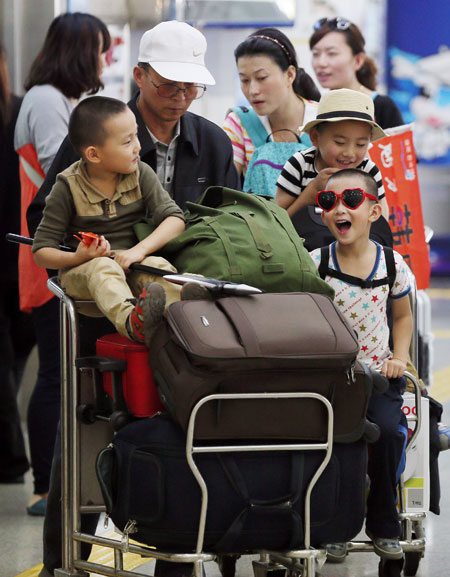
Chinese tourists arrive at Incheon Airport on Oct. 1. Some 150,000 Chinese
are expected to come during Golden Week holiday. / Yonhap
By Park Jin-hai
Chinese tourists are more often than not associated with large groups huddled together and following a flag-holding tour guide.
But, that could change, thanks to a newly enacted law on tourism in China, which has cracked down on cheap, low quality outbound tour packages.
Those on a visit to Korea during the past week _ the Golden Week public holiday that lasted from Oct. 1 to Oct. 7 _ tended to be younger, preferred touring independently, and had more buying power.
“It is my first visit. But, thanks to Psy’s Gangnam Style, that location is famous among tourists. Between Myeongdong and Gangnam, I prefer the latter, since it feels more upscale and has lots more to see and eat,” said Su Ying-yang, 26, from Nanjing, at the Lotte Department Store in Sogong-dong, Seoul, Monday.
The Korea Tourism Organization estimated that some 150,000 Chinese tourists came to the country during the seven-day holiday, up 64.5 percent from 91,000 last year. Yet, the number of tourists on package deals declined by 10 to 30 percent.
“The prices of package tours to Korea that Chinese travel operators offered increased 40 to 50 percent, due to the new law. The three-day tour, priced at around 500,000 won before, rose to 800,000 won,” said an industry watcher.
Hana Tour, one of the largest tour agencies, reported their customers on package tours decreased 30 percent, while another major tourist company Mode Tour reported a 20 percent drop from last year.
As Chinese tourists get younger and more affluent, their shopping pattern has changed as well. Instead of staying in the conventional shopping districts in Myeong-dong, they go to the posh streets of Gangnam.
The Hyundai Department Store in Apgujeong-dong, noted the value of purchases by Chinese tourists as of August increased 120 percent, while those during the national holiday are predicted to rise more than 100 percent.
Retailers including Shinsaegae Department Store estimated each Chinese customer would spend an average of 1.15 million won. They say the number of young Chinese who are purchasing luxury brands like Louis Vuitton, Hermes, and Channel has been rising steadily.
On Oct. 2 alone, about 10 Piaget Polo watches that cost over 150 million won each were sold to Chinese customers at Lotte Department Store’s Duty Free Shop in Sogong-dong, central Seoul. Shinsaegae Department Store also reported a 182 percent increase in the number of Chinese customers and an 800 percent rise in sales on the first day of the holiday, compared to the same day last year.
However, industry watchers say that the current shopping-centered tourism could end sooner or later, when the quality of Chinese products improves and its distribution system develops. This is where the more detail-oriented tour programs and differentiated tourism infrastructure are in need.
Cindy Yang form Shenzhen, 36, said cultural factors should be considered. “We have lots of vegetables with each meal. But, we like cooked vegetables, instead of raw ones that are served here like lettuces and sesame leaves. The latter has an especially strong odor that makes it near impossible for me to eat,” she added. Others said that whilst they needed hot teas to accompany meals, Korean restaurants only served cold water.
In addition, Lee Kwan-pyo, deputy director of the foreign tourism division at the Ministry of Culture, Sports and Tourism stressed the need for more diversity. He said the Boryung Mud Festival in South Chungcheong Province and on-going Busan International Film Festival are good examples.







